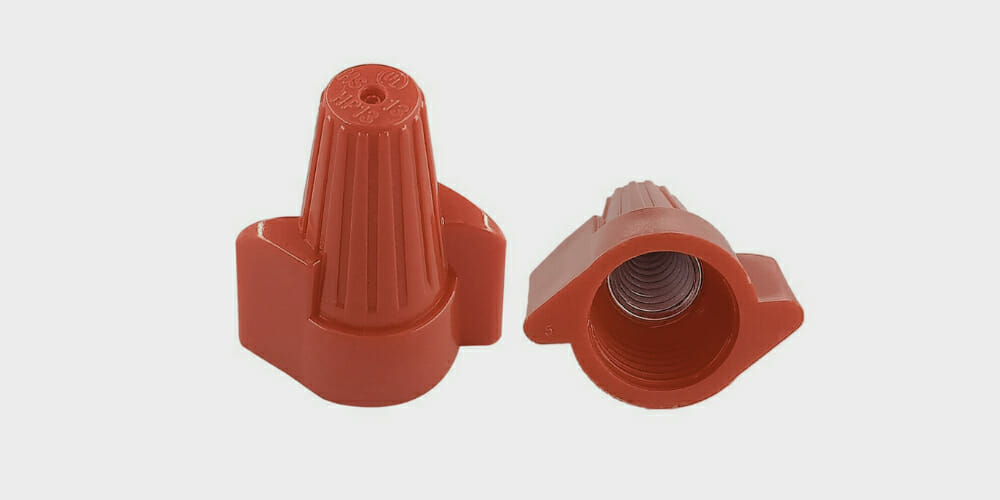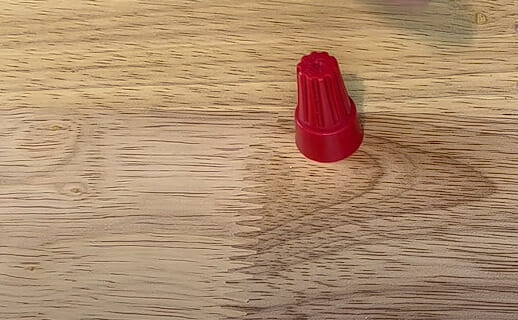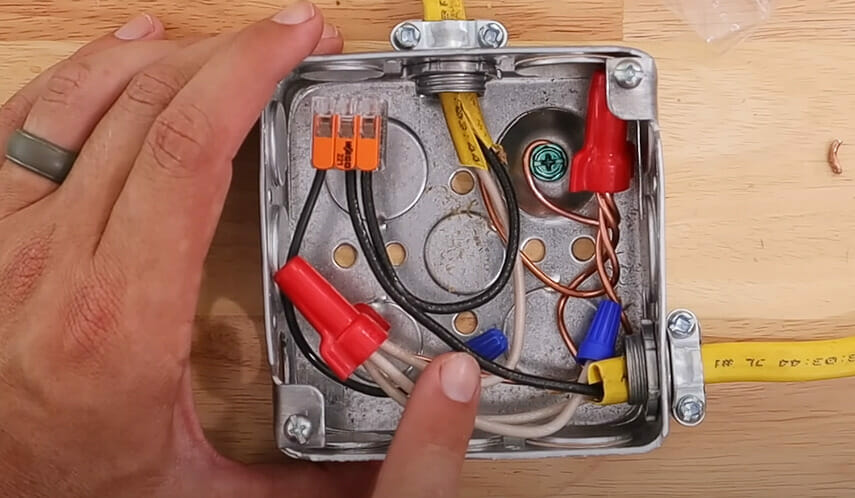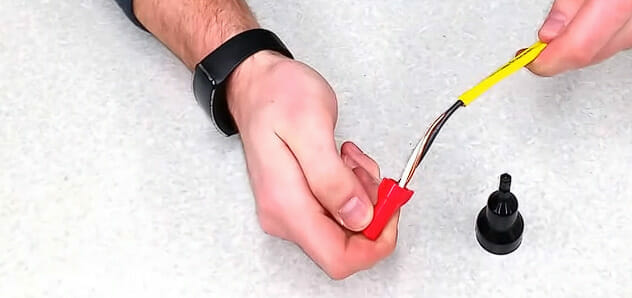How Many 14 Gauge Wires in a Red Wire Nut?

Key Takeaways – The short answer? Three. That’s right! A standard red wire nut comfortably accommodates up to three 14-gauge wires.
But stick around because we’re about to delve deeper into why that’s the case and how it all works!
Red Wire Nut Specifications and Capacity

Today, for red wire nuts. We’ll talk about their specifications and capacity, particularly focusing on how many 14 gauge wires can be accommodated by these handy little devices.
First, let’s set the stage with some basic facts about wire nuts in general. Wire nuts come in various sizes and colors, each designed for a specific range of wire gauges and numbers.
Color coding is super useful as it helps us know at a glance what kind of wires we can safely twist together.
Now onto our star of the day – the red wire nut. It’s quite popular due to its versatility and size range compatibility. These guys typically have:
- A voltage rating of 600 volts
- Temperature rating ranging from 105 degrees Celsius (221°F)
As for capacity? Now that’s where things get interesting! You see, it all depends on the manufacturer’s guidelines, but generally speaking:
| Gauge | Range |
|---|---|
| 14 AWG | 2 to 4 wires |
That means you’d usually be able to comfortably fit anywhere between two to four 14-gauge wires inside a single red wire nut!
But remember – always pay attention to your specific product instructions because “generally” doesn’t mean “always.”
Also, remember that safety first rules apply – if it doesn’t feel right or secure, chances are it isn’t!
But wait a minute! Hang on there. Let’s not forget that different manufacturers might have slightly different specifications. So it’s always best to check the packaging or manufacturer’s info before diving into your project.
Let me drop another nugget of wisdom here: The color coding system for wire nuts is not universal. While it remains fairly consistent across North American brands (red usually implies 2-4 #14 gauge wires), other parts of the world may have their own unique systems.
Potential Dangers of Overloading a Wire Nut

We’ll dive into what can go wrong when you overload a wire nut. Let’s be clear: Overloading is not your friend!
To understand this, I’ll make it simple. Imagine stuffing ten people in a car meant for five – cramped, uncomfortable, and unsafe. The same goes for wire nuts; they’re designed to securely hold a specific number of wires.
Now, when we talk about “14 gauge wires,” that’s industry talk for the thickness of the wire. You’re asking for trouble if you try cramming too many 14-gauge wires into a red wire nut (which usually holds up to four such wires).
Here are some things that could go wrong:
- Poor Connection: This happens when there are too many wires for the nut to grip properly. It’s like holding ten marbles in one hand – something will slip!
- Overheating: When electricity flows through too many wires squeezed together, it generates heat. Too much heat can cause insulation damage or even fire.
- Wire Damage: The pressure from overstuffing can strip away insulation or fray the wires themselves, causing short circuits and other problems.
So there you have it! The dangers of overloading a wire nut – pretty scary stuff!
Remember: Just as we don’t stuff ourselves at Thanksgiving dinner until we feel sick, let’s not do the same with our wire nuts!
Common Mistakes and How to Avoid Them

Oh, you bet! We’ve all been there. So let’s dive into some common mistakes people make when dealing with 14 gauge wires and red wire nuts.
Mistake number one – overloading. It’s tempting to jam as many wires as possible into a single wire nut. Doing this can lead to serious issues like loose connections and even fires! Generally, you’re looking at a safe limit of about four 14-gauge wires for a standard red wire nut.
Another biggie is not securing the connection properly. Just because it feels tight doesn’t mean it’ll hold. Always give your connections a good tug to check.
Now that we know what NOT to do, here are some tips on how TO do things:
- Always respect the wire capacity of your wire nut.
- Make sure your wiring is clean and free from corrosion before you start.
- And lastly, but crucially, check your work once you’re done.
So there you have it! Remember these pointers next time you’re wrestling with those pesky 14-gauge wires and red wire nuts. You’ll be surprised how much easier (and safer) everything becomes.
References
Organizations:
- Institute of Electrical and Electronics Engineers (IEEE). https://www.ieee.org/
Websites:
- The Family Handyman. https://www.familyhandyman.com/
- DIYChatroom. https://www.diychatroom.com/
- Home Depot DIY Workshop. https://www.homedepot.com/workshops/
- Electrical101. https://www.electrical101.com/
Image References:
- Red Wire Caps. https://www.amazon.com/dp/B07TNPB2NH/
Video References:
Home Rapid Repair
Gardner Bender
